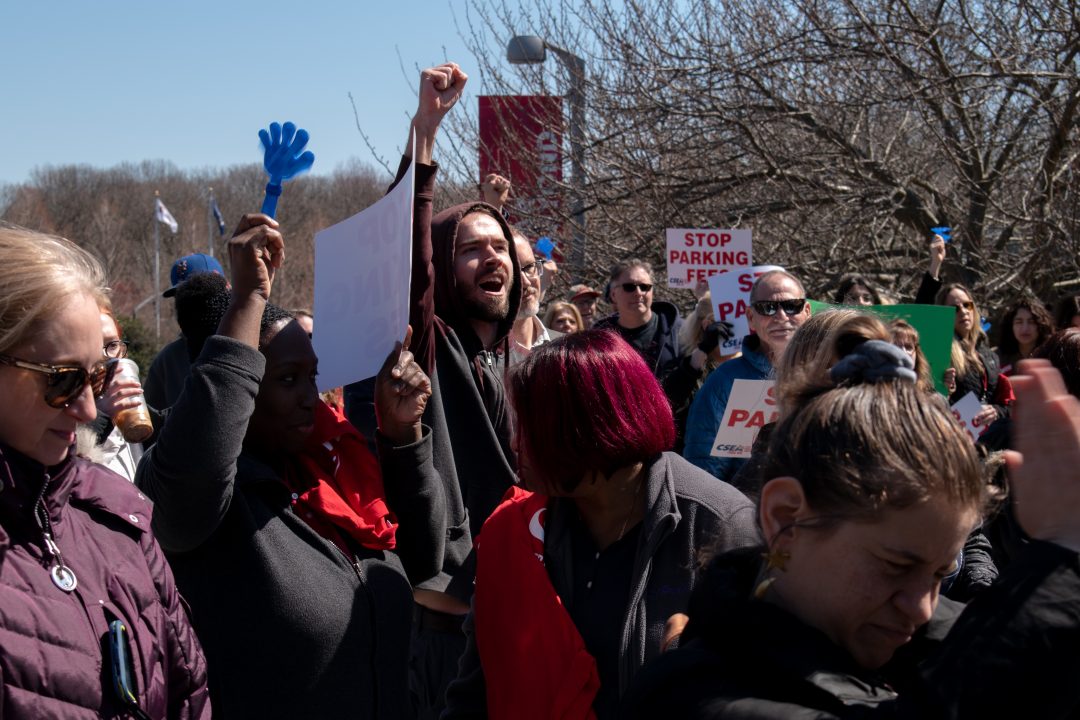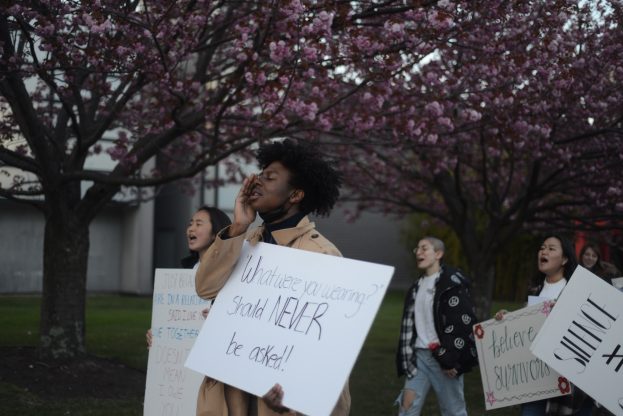
More than a dozen students assembled outside the Student Activities Center for the Feminist Majority Leadership Alliance’s (FMLA) annual Take Back the Night demonstration — a protest against sexual violence — on April 28. The FMLA was supported by partners Sigma Psi Zeta sorority and the Center for Prevention and Outreach (CPO).
Raymond Leveille, a senior biology major, led Thursday’s walk chanting “shatter the silence, stop sexual violence” and “let’s unite, take back the night.” He is a Violence Intervention Prevention and Relationship Education (VIPRE) peer educator at Stony Brook University and helped organize Take Back the Night.
“Honestly, it’s an honor to have led the walk, because it’s a tradition that is very important to me,” Leveille said. “We have to bring awareness to sexual violence.”
The crowd was led from the Student Activities Center, down the Zebra Path, past the Student Union and East Side Dining then circled around toward the Wang Center. The demonstration ended with a candlelight vigil at the fountain in the Academic Mall.
Samantha August, the survivor advocate and prevention specialist for Stony Brook, started the vigil with a moment of silence and urged participants to reflect on how sexual violence has affected them then leave their tealights behind on the fountain.
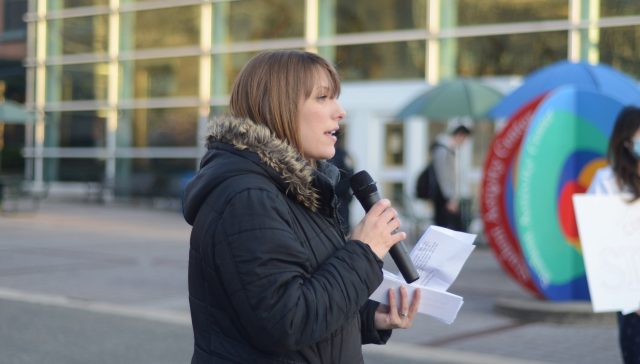
While August’s position is a part of the Center for Prevention and Outreach (CPO) department of Stony Brook, she can provide students with support and resources both on and off campus. While students may feel unsure about coming forward, August ensures that Stony Brook provides a safe space to do so.
“I feel that Title lX has drastically changed federally, but Stony Brook did a great job kind of managing those changes so it still covers sexual harassment and things that aren’t necessarily by law under federal Title lX,” August said. “I really think they really did their best to work with what they were given. The reality is, every student survivor wants something different.”
“We’re working our way towards improvement,” senior respiratory care major and Sigma Psi Zeta member Jane Ye said. “This event gives survivors a space to express themselves.”
“In the past, there have been moments where people have been disappointed in how Title lX has addressed these issues,” Sabriya Saif, president of FMLA and a senior psychology and political science double major, said. “I think with this protest the students are trying to make a change with Title lX and advocate how they can help survivors on campus.”
Sexual violence reports are handled by the Title lX Department at Stony Brook University. The department has been criticized by students in the past, specifically in the summer of 2020, when three Stony Brook fraternities were suspended after allegations of sexual assault flooded social media.
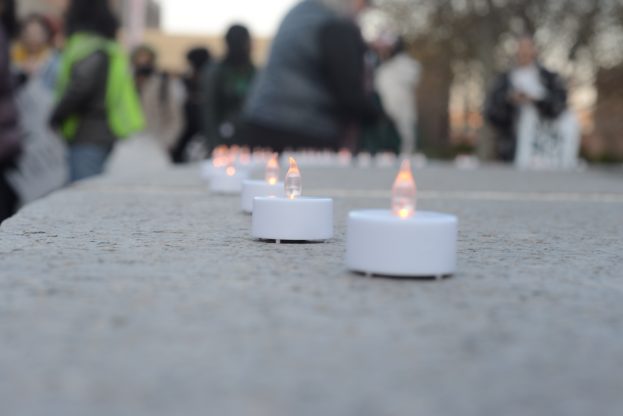
Sexual assault is “a sexual act that someone was forced to do against their will and without their consent,” as defined by Stop Street Harassment, a nonprofit organization dedicated to documenting and ending gender-based street harassment worldwide. Sexual harassment is a term that includes verbal, cyber and physical sexual harassment. Examples of this include sexually explicit talk, homophobic slurs, repeated requests for a date after a person has said no, the use of text/phone and the Internet to sexually harass, flashing or indecent exposure, being physically followed and being touched or brushed up against in a sexual way without consent.
The Title lX Department recently implemented a Title lX Task Force dedicated to examining the school’s current policies and procedures regarding sexual misconduct. The task force consists of students, faculty and staff.
“We expect these groups to provide various perspectives on what is working and where improvements can be made to promote reporting, raise awareness, and reduce and prevent incidents of sexual misconduct on campus,” the Office of Equity and Access’ (OEA) April 2022 Sexual Misconduct Prevention progress report said about the task force.
“I think they’ve made some progress, but there could be more,” Saif said. My solutions have been rejected in the past, which is disappointing, but hopefully future students can make a change.”
The OEA’s progress report also included data surrounding the number of reported incidents involving sexual misconduct from January 2019 to December 2021. The OEA recorded 191 reports in both 2019 and 2020, with the number of reports rising to 211 for 2021.
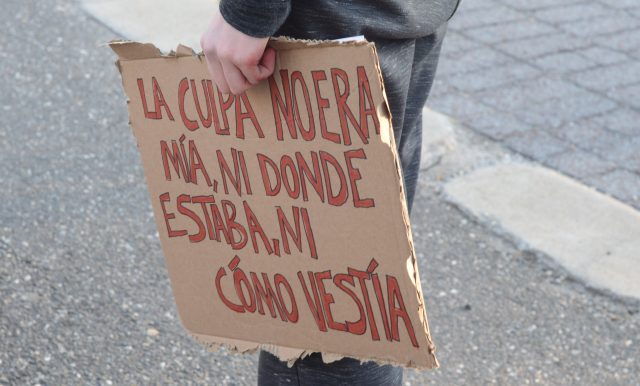
However, for an undergraduate population of about 18,000 students with more than 9,000 of them identifying as female, a mere 211 reports of sexual misconduct may not be representative of the actual instances of sexual violence on campus. A report published in 2019 by the Association of American Universities states that almost one in four undergraduate women experienced sexual assault or misconduct at 33 of the nation’s major universities.
“As a woman, you’re more prone to experiencing these things,” Ye said. “We’re trying to support each other and educate others.”
A 2018 report from Stop Street Harassment showed that 81% of women and 43% of men nationwide reported to have experienced some form of sexual harassment or assault in their lifetimes.
“I want people to remember that it’s still an issue that predominantly affects women,” Leveille said. “I am just glad to stand in solidarity with women as well as supporting survivors.”















